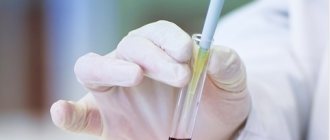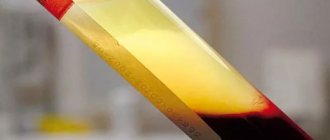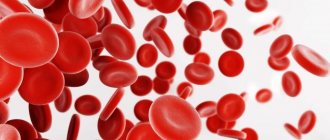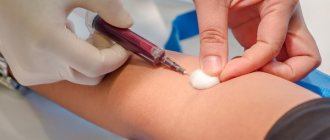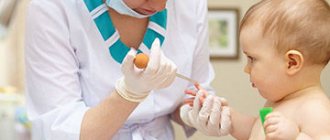To make an appointment with a doctor
Calling a pediatrician to your home
Our doctors
Our prices
November 11, 2021
Author of the article: Morozova Ekaterina Vyacheslavovna
Pediatrician, Candidate of Medical Sciences, member of the Union of Pediatricians of Russia
Experience: 15 years
+ Make an appointment
Every disease has its own root cause. Moreover, it can be either congenital or acquired. One of the most important controllable variables in the life of the body is the level of glucose in the blood or glycemia. This is the most important source of energy, which ensures the normal functioning of all organs and tissues. Deviation from the norm can become a provoking factor in the development of various diseases. Therefore, it is extremely important to control blood sugar in children and adults.
What method is blood taken for sugar?
As a rule, such an analysis is carried out in laboratory premises. Blood for analysis from a baby is usually taken from a finger. Blood collection, as in adults, requires certain preparation before analysis. Glucose concentration reaches its maximum level within 2 hours after eating. For this reason, the analysis is carried out on an empty stomach. The last meal should be consumed at least 9-12 hours before donating blood, otherwise the result will be inaccurate. Therefore, after calculating the time before the analysis, feed your child heavily at dinner, since in the morning you will have to do without breakfast. Water consumption should be kept to a minimum. And dentists also advise not to brush your teeth before the test, so that sugar from toothpaste does not enter the child’s body through the gums. If the indicators are too high, a repeat analysis is prescribed to ensure the accuracy of the result. Sometimes a blood test is prescribed to check the level of glycated hemoglobin.
Is it possible that the test results will be inaccurate?
Unfortunately, tests do not always show reliable results. If the reading is higher than the normal glucose level, your doctor will usually order a repeat test to rule out a laboratory error. Patients, in turn, need to follow the prescribed recommendations in order to exclude incorrect results on their part.
Table of blood glucose norms in children
| Age | Estimated result (mmol/l) |
| up to a year | 2.7 – 4.3 |
| 1 year | 3.3 – 5 |
| 2 years | 3.3 – 5 |
| 3 years | 3.3 – 5 |
| 4 years | 3.3 – 5 |
| 5 years | 3.3 – 5 |
| 6 years | 3.3 – 5,5 |
| 7 years | 3.3 – 5,5 |
| 8 years | 3.3 – 5,5 |
| 9 years | 3.3 – 5,5 |
| 10 years | 3.3 – 5,5 |
| over 11 | 3.3 – 5,5 |
The first test result may be unreliable; to confirm the result, specialists will order a repeat test
4.3 mmol/l is an acceptable result for blood glucose in newborns; in adolescents, the sugar level should not exceed 5.5 mmol/l.
If you have received test results and they are higher than normal, but do not reach a critical level, this does not mean that everything is in order and you can do nothing. To avoid the development of diabetes in your child, you should already take measures to lower/increase sugar levels. It may take a long time before an official diagnosis of prediabetes is made, but complications will already develop, and many of them are irreversible. To date, scientists have not yet come up with a way to restore blood vessels damaged by low blood sugar levels.
IMPORTANT! From 10 to 12 years, some deviations of the monosaccharide content in the blood from the norm are observed.
If your baby wants something sweet, give preference to fruits or berries - it’s tasty and healthier for his body.
How to make an appointment with an endocrinologist
If you are looking for a highly qualified endocrinologist in the center of Moscow, then you can contact JSC “Medicine” (clinic of academician Roitberg). Specialists will prescribe all the necessary tests, conduct an examination and make a diagnosis.
Doctors select an individual treatment method, which increases the effectiveness of actions.
Our multidisciplinary medical center is located in the Central Administrative District at the address: Moscow, 2nd Tverskoy-Yamskoy lane, building 10 (Mayakovskaya metro station).
You can make an appointment with specialists using a special form on the website or by calling +7.
Why is it rising?
A high level of dextrose in the blood warns of the occurrence of diabetes mellitus in children. And also, excess blood sugar in children can be due to the following factors:
Why does a newborn have low blood sugar?
- improper preparation before taking the test (failure to comply with time restrictions on food intake, psychological or physical stress shortly before the test);
- damage to the thyroid gland (insulinoma), adrenal glands or pituitary gland;
- disruption of the normal functioning of the pancreas (insufficient release of insulin by the body);
- obesity of any degree (metabolism problems in the body);
- frequent use of anti-inflammatory medications;
- wrong diet.
In almost 100% of cases, type 1 diabetes mellitus occurs in children under 12 years of age. This is due to the production of insulin in insufficient quantities, which has a hypoglycemic effect.
Symptoms of the disease
Diabetes mellitus develops rapidly in children. It is accompanied by strong thirst and profuse urination, increased appetite and rapid weight loss, and rapid fatigue. Other manifestations of the disease are also possible: dry skin and mucous membranes, peeling skin and pustular lesions, diaper rash, dry seborrhea, the appearance of seizures, candidal stomatitis, mycoses, furunculosis. Boys develop balanoposthitis, and girls develop vulvitis, and the menstrual cycle is disrupted. Diabetes mellitus can be suspected in infants by sticky urine and “starch spots”, which cause diapers to become hard and crunchy. In the absence of treatment, various complications appear after 1-3 months: functional heart murmurs, tachycardia, hepatomegaly, ketoacidosis, diabetic coma.
The younger the sick child, the more severe the disease and the more often complications develop.
Why is it decreasing?
Most often this happens due to the teenager's hyperactivity. Children are often restless, which leads to irrational use of energy.
Low blood glucose concentrations are due to the following factors:
- dehydration of the body;
- improper diet;
- disorders of the thyroid gland (insulinoma);
- poisoning of the body with arsenic or chloroform;
- disorders in the central nervous system or brain injury;
- damage to the gastrointestinal tract (gastritis, pancreatitis, enteritis);
- severe chronic diseases;
- inadequate use of physical energy;
- untimely nutrition or its prolonged absence (glucose starvation).
Do not abuse medications. The best solution in the fight against diabetes is following a prescribed diet
Hypoglycemic state in children
A rare case of organic hyperinsulinism in a 3-month-old child
The fasting blood glucose level in a practically healthy person ranges from 3.3 to 5.5 mmol/l when determined by the glucose oxidase method. During the day, glucose in blood plasma can normally fluctuate from 2.8 to 8.8 mmol/l. Blood glucose levels below 2.7 mmol/l are commonly called hypoglycemia.
The main cause of the hypoglycemic symptom complex is hyperinsulinism.
Hyperinsulinism is a pathological condition of the body caused by an absolute or relative excess of insulin, causing a significant decrease in blood sugar; as a consequence, glucose deficiency and oxygen starvation of the brain occur, which leads primarily to disruption of higher nervous activity.
Absolute hyperinsulinism is a condition associated with pathology of the insular apparatus (primary organic hyperinsulinism). The most common causes of organic hyperinsulinism are insulinoma - a tumor of b-cells of the islets of Langerhans, secreting excess amounts of insulin (in adults and older children) and nesidioblastosis - hyperplasia of the pancreatic islets (in children of the first year of life). Another common cause of hyperinsulinism in young children is functional hyperinsulinism in newborns from mothers with diabetes.
Benign adenoma of the islets of Langerhans was first discovered in 1902 during an autopsy by Nicholls. In 1904, L.V. Sobolev described the “struma of the islets of Langerhans.” In 1924, Harris and the domestic surgeon V.A. Oppel independently described the symptom complex of hyperinsulinism. In the same year, G. F. Lang observed multiple adenomatosis of pancreatic islets. In Russia, a successful operation to remove insulinoma was performed in 1949 by A. D. Ochkin, and in 1950 by O. V. Nikolaev. An insulin-secreting tumor has been described in all age groups, from newborns to the elderly, but more often it affects people of working age - from 30 to 55 years. Among the total number of patients, children make up only about 5%. 90% of insulinomas are benign. About 80% of them are solitary. In 10% of cases, hypoglycemia is caused by multiple tumors, 5% of them are malignant, and 5% are nesidioblastosis (Antonov A.V. Clinical endocrinology, 1991).
The term nesidioblastosis was introduced by G. Laidlaw in 1938. Nesidioblastosis is a total transformation of the ductal epithelium of the pancreas into β-cells that produce insulin. In children of the first year of life, this is the most common cause of organic hyperinsulinism (only 30% of hyperinsulinism in children is caused by insulinoma, 70% by nesidioblastosis). This is a genetically determined disease.
The diagnosis is established only morphologically after excluding insulinoma. Clinically, it manifests itself as severe hypoglycemia that is difficult to correct, as a result of which, in the absence of a positive effect from conservative treatment, it will be necessary to resort to reducing the mass of pancreatic tissue. The generally accepted volume of surgery is 80 - 95% resection of the gland.
Insulinomas in children are extremely rare and are located either in the tail or in the body of the pancreas. Their diameter ranges from 0.5 to 3 cm. The small size of insulinomas creates difficulties for diagnosis (the information content of the ultrasound method is no more than 30%). To determine the location of insulinoma, selective angiography, CT and MRI, or scanning with an octreotide isotope (an analogue of somatostatin) are used. The most informative is angiography with selective blood sampling from the pancreatic veins (60 - 90%).
Insulinoma is manifested by a more or less sharp drop in blood sugar levels, which is caused by increased secretion of insulin into the blood. The radical method of treating insulinoma is surgery (insulinomectomy); the prognosis in most cases is favorable (88 - 90%) with timely surgical intervention.
Organic hyperinsulinism (insulinoma, nesidioblastosis) is the cause of severe pancreatic hypoglycemia with a drop in blood sugar to 1.67 mmol/l and lower (during an attack). These hypoglycemia are always non-ketotic (acetone in the urine is negative due to the suppression of lipolysis processes).
The most common in clinical practice is ketotic hypoglycemia (with acetonuria). Ketotic hypoglycemia is extrapancreatic and can be endocrine- and non-endocrine-dependent. They are accompanied by relative hyperinsulinism, that is, not associated with the pathology of the insular apparatus of the pancreas (secondary, functional, symptomatic hyperinsulinism). Relative hyperinsulinism is caused by an increase in the body's sensitivity to insulin normally secreted by b-cells of the pancreatic islets or a violation of the compensatory mechanisms involved in the regulation of carbohydrate metabolism and in the inactivation of insulin.
Endocrine-dependent ketotic hypoglycemia (without increasing the level of insulin in the blood) is detected with a deficiency of counter-insulin hormones in patients with hypofunction of the anterior pituitary gland (cerebral-pituitary dwarfism, isolated GH deficiency, hypopituitarism), thyroid gland (hypothyroidism), and adrenal cortex (Addison's disease).
Without an increase in insulin levels, extrapancreatic hypoglycemia can occur, which occurs with extrapancreatic tumors (chest, abdominal cavity, retroperitoneal, etc.), hypoglycemia accompanying diffuse liver diseases, chronic renal failure. In children of the first year of life, the cause of ketotic non-endocrine-dependent hypoglycemia (without hyperinsulinism) is congenital enzymopathies (glycogenosis).
In clinical practice, reactive hypoglycemia is often encountered - functional hyperinsulinism with vegetative-vascular dystonia. They are observed in obese individuals, in neurotic children of preschool age against the background of acetonemic vomiting due to disruption of the processes of gluconeogenesis, etc.
Hypoglycemia of an exogenous nature (caused by the administration of insulin, hypoglycemic agents, salicylates, sulfonamides and other drugs) is also common.
With functional hyperinsulinism, hypoglycemia is clinically less pronounced, blood sugar does not fall below 2.2 mmol/l.
Hypoglycemia can be detected by clinical signs; more often, low blood sugar levels are a laboratory finding. Detection of hypoglycemia in the early morning hours or on an empty stomach before breakfast in capillary blood at least 2-3 times is considered reliable (in the absence of clear clinical data). The indication for examination in a hospital is a classic clinical picture of hyperinsulinism or three times confirmed morning hypoglycemia (without clinical manifestations) below age indicators (decrease in fasting glycemia for newborns - less than 1.67 mmol/l, 2 months - 18 years - less than 2.2 mmol/l , over 18 years old - less than 2.7 mmol/l).
Whipple's triad is pathognomonic for hypoglycemic disease:
- the occurrence of attacks of hypoglycemia after prolonged fasting or physical activity;
- a decrease in blood sugar during an attack below 1.7 mmol/l in children under 2 years of age, below 2.2 mmol/l in children over 2 years of age;
- relief of a hypoglycemic attack by intravenous administration of glucose or oral administration of glucose solutions.
Most symptoms of hypoglycemia are caused by insufficient glucose supply to the central nervous system. When glucose levels decrease to hypoglycemia, mechanisms aimed at glycogenolysis, gluconeogenesis, mobilization of free fatty acids, and ketogenesis are activated. These processes involve mainly 4 hormones: norepinephrine, glucagon, cortisol, growth hormone. The first group of symptoms is associated with an increase in the content of catecholamines in the blood, which causes weakness, tremors, tachycardia, sweating, anxiety, hunger, and pale skin. Symptoms from the central nervous system (symptoms of neuroglycopenia) include headache, double vision, behavioral disturbances (mental agitation, aggressiveness, negativism), followed by loss of consciousness, convulsions, and coma with hyporeflexia, shallow breathing, and muscle atony. Deep coma leads to death or irreversible damage to the central nervous system. Frequent attacks of hypoglycemia lead to personality changes in adults and decreased intelligence in children. The difference between the symptoms of hypoglycemia and real neurological conditions is the positive effect of food intake, the abundance of symptoms that do not fit into the clinic.
The presence of pronounced neuropsychiatric disorders and insufficient awareness of doctors about hypoglycemic conditions often lead to the fact that, due to diagnostic errors, patients with organic hyperinsulinism are treated for a long time and unsuccessfully under a variety of diagnoses. Erroneous diagnoses are made in 3/4 of patients with insulinoma (epilepsy is diagnosed in 34% of cases, brain tumor - in 15%, vegetative-vascular dystonia - in 11%, diencephalic syndrome - in 9%, psychosis, neurasthenia - 3% (Dizon A. M., 1999).
The period of acute hypoglycemia is the result of a breakdown of counterinsular factors and the adaptive properties of the central nervous system.
Most often, an attack develops in the early morning hours, which is associated with a long night break in eating. Typically, patients cannot “wake up” due to various kinds of disorders of consciousness. There may be lethargy and apathy in the morning. The epileptiform seizures observed in these patients differ from the true ones by their longer duration, chorioform convulsive twitching, hyperkinesis, and abundant neurovegetative symptoms. Recognition of the disease requires a thorough examination of the anamnesis and careful observation of patients. This is especially important for diagnosing organic hyperinsulinism as a cause of hypoglycemia in children.
In children of the first year of life, it is difficult to clinically detect hypoglycemia, since the symptoms are vague and atypical. This may be cyanosis, pallor of the skin, decreased muscle tone, respiratory arrest (apnea), tremors, convulsions, “rolling” of the eyeballs (nystagmus), anxiety. In the congenital form (nesidioblastosis), there is a large body weight (large fetus), swelling, and a round face.
In children of preschool and school age with organic hyperinsulinism, benign insulinoma is more often registered. These children are characterized by morning incapacity, difficulty waking up in the morning, impaired concentration, pronounced feelings of hunger, cravings for sweets, negativism, and palpitations. Hyperinsulinism leads to increased appetite and obesity. The younger the child, the greater the tendency for low blood sugar in response to longer intervals between meals.
Among the laboratory parameters for suspected organic hyperinsulinism (insulinoma or nesidioblastosis), a special place is occupied by the study of immunoreactive insulin (IRI). But, as practice has shown, proven insulinoma does not always have elevated values. IRI is usually assessed simultaneously with the glycemic level. An important index is the ratio of insulin to glucose - IRI mked/ml/venous glucose mmol/l. In healthy people and against the background of hypoglycemia without hyperinsulinism, this index is less than 5.4.
Among the functional tests used to diagnose organic hyperinsulinism, the most common is the fasting test.
The test is based on the development of hypoglycemia in people with hyperfunction of the pancreatic insular apparatus when the intake of carbohydrates from food is stopped. During the test, the patient is allowed to drink only water or tea without sugar. The younger the child and the more frequent the attacks of hypoglycemia, the shorter the test.
Test duration: children under 3 years old - 8 hours; 2 - 10 years - 12-16 hours; 10 - 18 years - 20 hours; over 18 years old - 72 hours (recommendations of the Department of Pediatric Endocrinology of the Russian Medical Academy of Postgraduate Education, Moscow).
For children 2 years of age and older, the last meal should be the night before; For children under 2 years of age, the test begins in the early morning hours.
In a healthy person, overnight or longer fasting moderately reduces the level of glycemia and, characteristically, reduces the level of insulin in the blood. In the presence of a tumor that constantly produces excess amounts of insulin, under starvation conditions, the prerequisites are created for the development of hypoglycemia, since there is no glucose supply from the intestine, and hepatic glycogenolysis is blocked by tumor insulin.
Before starting the test, the glucose content in the blood plasma is determined. Next, glycemia in capillary blood (with a glucometer) is examined in children under 2 years of age once an hour, in children aged 2 years and older - once every 2 hours. When blood sugar decreases to 3.3 mmol/l or less, the test intervals are reduced by 2-3 times. The threshold of acceptable glycemia, at which fasting is stopped and research is carried out, is 1.7 mmol/l in a child under 2 years old, 2.2 mmol/l in children over 2 years old. After threshold hypoglycemia is registered with a glucometer, the blood serum is examined for the content of IRI and counter-insulin hormones, blood glucose is examined using a biochemical method (since after the glucose level is reduced to 3.3 mmol/l and below, the glucometer gives an inaccurate result), and the level of blood lipids is examined.
An attack of hypoglycemia is stopped by administering 40% glucose intravenously; immediately after the administration of glucose and 3 hours after the end of the test, urine is examined for the content of ketone bodies.
Interpretation of sample results
- If acetone is not detected in the urine, then hypoglycemia is caused by hyperinsulinism (increased insulin suppresses the breakdown of fatty acids - lipolysis). The presence of acetonuria indicates the intensive formation of ketone bodies from fatty acids coming from fat depots. With hypoglycemia not associated with hyperproduction of insulin, lipolysis is turned on as an energy source, which leads to the formation of ketone bodies and the formation of positive acetone in the urine.
- With hyperinsulinism, the content of lipids in the blood is not changed or reduced; with ketotic hypoglycemia, the lipid level is increased.
- A decrease in the level of counter-insulin hormones is observed in endocrine-dependent ketotic hypoglycemia; with organic hyperinsulinism the indicators are not changed.
- The IRI/venous glycemia index in healthy children and against the background of hypoglycemia without hyperinsulinism was less than 5.4, whereas with organic hyperinsulinism this figure increases significantly.
If hyperinsulinism is confirmed as the cause of hypoglycemia, further examination and treatment in a specialized endocrinology department is necessary.
In all cases, surgical treatment is indicated with insulin. For nesidioblastosis, therapy can be conservative or radical. The drug diazoxide (proglycem, zaroxolin) has currently received the greatest recognition. The hyperglycemic effect of this non-diuretic benzothiazide is based on inhibition of insulin secretion from tumor cells. The recommended dose for children is 10 - 12 mg per kg of body weight per day in 2 - 3 doses. In the absence of pronounced positive dynamics, surgical treatment is indicated - subtotal or total resection of the pancreas (with possible transition to diabetes mellitus).
S. A. Stolyarova, T. N. Dubovaya, R. G. Garipov S. A. Malmberg, Doctor of Medical Sciences V. I. Shirokova, Candidate of Medical Sciences Children's Clinical Hospital No. 38 FU "Medbioextrem" under the Ministry of Health of the Russian Federation, Moscow
Patient Zakhar Z., 3 months. , was admitted to the Department of Psychoneurology of Children's Clinical Hospital No. 38 of the FU Medbioextrem in Moscow on November 1, 2002 with a referral diagnosis of epilepsy.
A child with a moderately burdened perinatal history. This was the mother’s first pregnancy and proceeded with toxicosis in the first half and anemia. Delivery at 40 weeks, large fetus (birth weight 4050 g, length 54 cm). Apgar score: 8/9 points. From the neonatal period to 2 months. tremor of the chin was periodically noted; from the age of 2 months, paroxysmal states appeared in the form of stopping gaze, decreased motor activity, twitching of the right half of the face, right hand (attacks of focal convulsions) - for several seconds 3-4 times a day. He was treated as an outpatient by a neurologist and received anticonvulsant therapy without a significant positive effect. On the eve of hospitalization, choreiform twitching appeared in the morning against the background of impaired consciousness. Hospitalized in the department of psychoneurology with a referral diagnosis of epilepsy.
Upon admission, the child's condition was moderate. In the somatic status - the skin has manifestations of atopic dermatitis, the pharynx is clean, there are no wheezes in the lungs, heart sounds are sonorous, tachycardia up to 140 - 160 beats. per minute The abdomen is soft, liver +2 cm, spleen +1 cm. Urination is not impaired. In neurological status - lethargic, fixed gaze, poor head support. CN - intact, muscle tone is reduced, more in the arms, symmetrical. Tendon reflexes are low, D = C, unconditioned reflexes are low - according to age. Weight - 7 kg, height - 61 cm (excess weight is noted against the background of the average age growth rate).
In the hospital, a biochemical fasting blood test revealed for the first time a decrease in blood sugar to 1.6 mmol/l in the absence of ketone bodies in the urine.
Results of laboratory and instrumental examination:
- Oculist - no pathology was detected in the fundus.
- ECG - heart rate 140, sinus rhythm, vertical position of the EOS.
- Allergist - atopic dermatitis, common form, mild course.
- Ultrasound of the abdominal organs - the pancreas is not clearly visualized in its typical location. Ultrasound of the adrenal glands - no changes. Ultrasound of the kidneys - reactive changes in the walls of the jaw, Fraley syndrome on the left, pyelectasis on the left cannot be excluded. Spleen - moderate splenomegaly.
- General blood test - Hb 129 g/l, er - 5.08 million, l - 8.7 thousand, ESR - 3 mm/hour.
- General urine analysis - protein, sugar, acetone - neg., L - 2 - 3 in the field of vision, er - 0 - 1 in the field of view.
- Blood biochemistry (upon admission) - total protein. - 60.5 g/l, ALT - 20.2 g/l, AST - 66.9 g/l, bilirubin total. - 3.61 µmol/l, glucose - 1.6 mmol/l, creatinine - 36.8 µmol/l, urea - 1.88 mmol/l, total cholesterol. — 4.44 mmol/l, iron total. - 31.92 µmol/l, potassium - 4.9 mmol/l, sodium - 140.0 mmol/l.
Dynamic monitoring of glucose levels revealed persistent hypoglycemia in capillary and venous blood. On an empty stomach and 2 hours after feeding with breast milk during the day, glycemia ranged from 0.96 to 3.2 mmol/l. Clinically, hypoglycemia was manifested by increased appetite, lethargy, tachycardia, episodes of “rolling” of the right eyeball, and generalized epileptiform convulsions. During the interictal period, the state of health is satisfactory. Hypoglycemic conditions were relieved by oral glucose intake, as well as intravenous administration of 10% glucose.
For diagnostic purposes, to confirm hyperinsulinism, the child underwent a fasting test: the last night feeding at 6 a.m., before feeding, glycemia was 2.8 mmol/l, 3.5 hours after feeding, the glucometer showed a decrease in glycemia to 1.5 mmol/l (below the acceptable threshold). Against the background of hypoglycemia, blood serum was taken for hormonal studies (IRI, c-peptide, cortisol, STH). Venous blood was collected for biochemical testing of glucose and lipid levels. After relief of hypoglycemia with intravenous injection of glucose, a three-hour portion of urine was collected for the content of ketone bodies.
Test results: no acetonuria. The level of counter-insulin hormones is not reduced (cortisol - 363.6 when the norm is 171 - 536 nmol/l, STH - 2.2 when the norm is 2.6 - 24.9 µU/ml). C-peptide - 0.53 at a normal level of 0.36 - 1.7 pmol/l. IRI - 19.64 with normal - 2.6 - 24.9 mmkE/ml. Venous glucose - 0.96 mmol/l. Blood lipid levels are at the lower limit of normal (triglycerides - 0.4 mmol/l, total cholesterol - 2.91 mmol/l, high-density lipoprotein cholesterol - 1.06 mmol/l, low-density lipoprotein cholesterol - 1.06 mmol/l - 1.67 mmol/l. IRI/glucose index (19.64 /0.96) was 20.45, with the norm being less than 5.4.
Data from the anamnesis, dynamic observation, and clinical and laboratory examination allowed us to make a diagnosis: non-ketotic hypoglycemia. Hyperinsulinism. Nesidioblastosis?
To clarify the genesis of the disease and treatment tactics, the child was transferred to the endocrinology department of the Russian Children's Clinical Hospital in Moscow, where insulinoma was ruled out in the boy. The diagnosis of nesidioblastosis was confirmed. A trial of conservative treatment with proglycem at a dose of 10 mg per kg of body weight was prescribed. There was a tendency towards normalization of carbohydrate metabolism indicators. Further follow-up is planned to adjust treatment tactics.
The considered clinical case dictates the need to study the parameters of carbohydrate metabolism in all young children with convulsive syndrome, due to the erasure of the clinical symptoms of hypoglycemia in infants and young children, in order to exclude diagnostic errors.
How to reduce sugar levels without side effects?
First, you need to purchase a high-precision glucometer (preferably imported). This is necessary so that you can monitor your current sugar levels on a daily basis. You should check your glucose levels several times a day:
- since morning;
- before eating;
- after meal;
- before physical activity;
- after physical activity;
- before bedtime.
Knowing these subtleties will make your life much easier, since your main goal is to maintain sugar levels within the range of 3.3 - 5.5 mmol/l. Self-measurements of blood will help you understand when or after what sugar deviates from the norm and, accordingly, these factors should be excluded.



